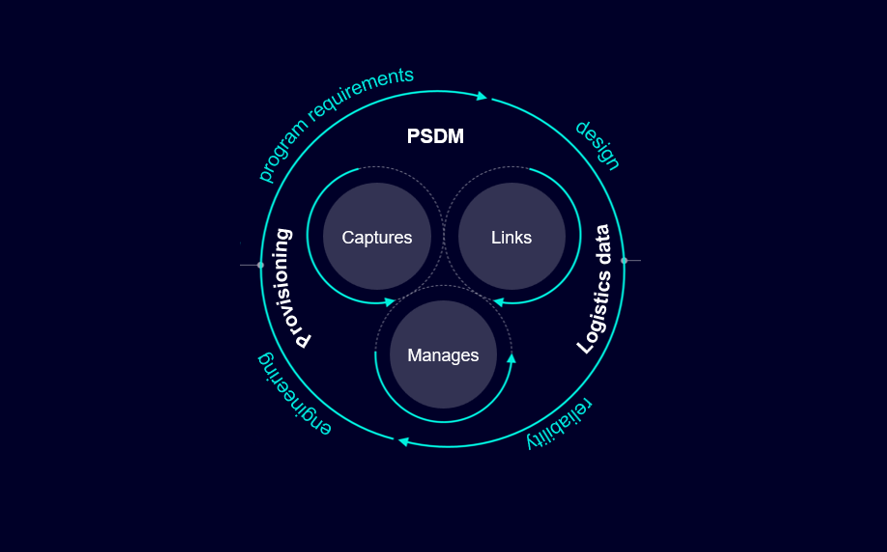What is Logistics Data Management

Logistics Data Management is enabled using Siemens Product Support Data Management (PSDM) capabilities, offered as part of Teamcenter service lifecycle management (SLM). When Original Equipment Manufacturers (OEMs) deliver complex systems to operators, transferring product knowledge can be challenging. Logistics Data Management is also known as Product Support Data Management (PSDM) helps OEMs manage this knowledge and facilitate its transfer to operators by capturing and organizing all support data. This ensures the operators can maintain, upgrade, and manage products effectively.
In the aerospace and defense space, having visibility of logistics data is critical to ensuring the maximum availability of fleets. For instance, defense organizations today rely on numerous specialized logistics systems. PSDM consolidates disparate logistics data sources into a unified environment, enabling efficient supply chain management, reducing manual errors, and ensuring critical components are always in stock.
As part of the Siemens Xcelerator portfolio of solutions, PSDM provides a simple and convenient way to manage product support & logistics data, increasing operational efficiency, and reducing costs and risks. As it’s natively built on top of Teamcenter Product Lifecycle Management (PLM), PSDM leverages all the data you already have and keeps IT in sync with engineering data.
Understand Product Support Data Management (PSDM)
PSDM involves various support functions to maintain the readiness and operational capability of weapons systems, subsystems, software, and support systems. It supports material management, maintenance, training, technical data management, and reliability analysis. As part of Teamcenter Service Lifecycle Management (SLM), PSDM utilizes information created and managed in PLM and SLM to support downstream processes for sustainment.
PSDM consolidates data coming from engineering as well as suppliers into a single source of truth that can be easily shared with operators and all stakeholders in charge of maximizing availability. It natively supports GEIA STD 0007c. One of the main objectives of PSDM is to enable the Operator of the product to be fully prepared to operate and maintain the product before they receive the first delivery. The PSDM process captures links and manages the associated provisioning and logistics data for the product to the design and design requirements.

Why do we need PSDM?
- Improved Product Design: By integrating supportability considerations early in the design phase, PSDM helps create products that are easier to maintain, more reliable, and cost-effective over their lifecycle.
- Integrated Support Across Teams: PSDM ensures that engineering, maintenance, and support teams work with the same up-to-date data, reducing errors, improving collaboration, and cutting down costs.
- Cost Efficiency: Organizations gain better visibility into their support-related expenses, enabling informed decision-making and identifying opportunities to reduce costs.
Challenges PSDM solves
- Broken communication: Enables a standard way of transferring product support data between operator OEM and suppliers
- Disconnected design and maintenance: Poor integration between design, maintenance, and support raises costs, reduces reliability, and limits product availability.
- Lack of data optimization: Manages outdated asset data to improve maintenance planning, execution, and spare parts availability.
- Standard Adherence: Integrates the data requirements with clear design and engineering data.
For organizations aiming to thrive in today’s competitive landscape, Product Support Data Management is not just a nice-to-have, it’s essential. PSDM simplifies how you manage product support data, driving efficiency, reducing costs, and ensuring the reliability and readiness of critical systems.
Learn more
Interested in learning more about Service Lifecycle Management?
Watch the video to learn more about the role of SLM in service excellence.
Discover the latest enhancement in Service Lifecycle Management by clicking here.


